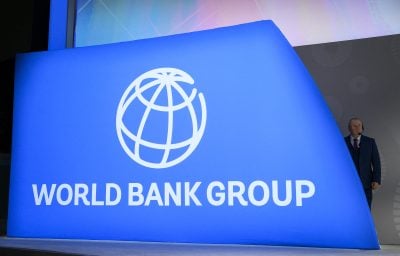African currencies have come into their own. Many of the continent’s currencies are now freely convertible and this factor, allied to Africa’s growth curve and very poor returns on the euro and dollar, has been encouraging more investments in African forex markets.
The high levels of economic growth across Africa, coupled with a growing crisis in the Eurozone, have strongly influenced investors to pay greater attention to African currencies. This trend is only expected to increase over the coming decades, as growth in African economies is expected to be sustained, whilst developed economies, such as those in Europe, face the prospect of stagnation, and perhaps even another recession.
Given that, (according to IMF figures), six of the 10 fastest-growing economies in the world during 2000–2010 were in Africa, it is no surprise that Mike Christelis, head of Africa trading at Absa Capital, a subsidiary of Barclays, has observed that “economic fundamentals drive the interest among foreign exchange (FX) investors”. Gross domestic product (GDP) in sub-Saharan Africa is expected to increase by 6% in 2012.
South African rand volumes exemplify the greater amounts of foreign capital going into Africa’s FX markets, with daily transactions amounting to $14.4bn. In February, the rand was the second-best performer amongst 20 emerging market currencies monitored by Reuters – other economies in the region barely compete with this.
In comparison Egypt, whose GDP makes it the 27th-largest economy in the world, has a turnover on its FX which is equivalent to between $200-400m a day. Nigeria and Kenya have daily volumes equivalent to between $100-200m. It is also not surprising that some of the currencies that are most in the limelight include the Nigerian naira, the Ghanaian cedi and the Zambian kwacha, some of the continent’s fastest-growing economies.
Today, the majority of African currencies are freely exchangeable on financial markets. This is still not the case for other important currencies, such as the Chinese yuan, a currency that many experts predict will become the world’s reserve currency over the medium term. It was during the 1990s that many African economies decided to dismantle their fixed exchange rates, whilst opting for safer fiscal and monetary policies. Ghana, Kenya, Nigeria, Uganda and Zambia – the biggest sub-Saharan FX markets – all have freely convertible currencies.
However, there are still restrictions imposed in many African economies to prevent excessive speculation. In Ghana, foreigners can only participate in government bond auctions over a period of three and five years, the longest expiries on offer and those least likely to increase currency volatility. There is also a strong wave of continued liberalisation, as countries seek foreign investments. In July last year, Nigeria abolished a rule requiring non-residents to buy local government bonds and to hold them for at least a year. This has had an significant effect on investor appetite for exposure to the naira.
Other countries remain closed to the greater public. Angola has excited investors for quite some time, given it produces 1.85m barrels of oil a day, rivalling Nigeria to be Africa’s biggest crude exporter. However, Angola still has no stock market, no corporate bond market and very little opportunity for foreigners to hold local currency government debt, and its local currency, the kwanza, is not freely tradable.
This has much to do with Angola’s economy being highly dollarised, with very little lending taking place in kwanzas – even through local banks. Also, with oil prices continuing to surge, there is no great need for the country to raise debt by convincing foreigners to buy its bonds: the country had a fiscal surplus of nearly 8% of its GDP by the end of 2011.
There is always a risk for African governments who elect to aggressively liberalise their FX and capital markets. Fears of things taking the wrong turn are present in Tanzania, where there is strong growth and the country recently discovered natural gas reserves, which are so important that the country may become one of the world’s largest exporters. Compared to its East African neighbours, Kenya and Uganda, it has placed more restrictions on foreigners buying local currency bonds.
Innovative products
Investments in African currencies have led to diversification and the creation of innovative FX products. A few years ago, African currency trading was mainly dominated by spot markets and but today there is far greater hedging activity as well as greater use of currency and interest rate swaps.
Emerging markets have been gaining popularity– understandably, as interest rates in the US generate little earnings. It is no wonder that certain banks have created a role for themselves in this increasingly prominent sector.
With an estimated $20bn on its books, the pan-African banking group Ecobank vows to become a pivotal player between international investors and their African counterparts. It is the only bank to have created a platform that trades in 18 African currencies, with more expected to be added. This very much addresses a gap in the market that needed to be filled, allowing international investors, often in the quest to diversify, to position themselves on African currencies, often characterised by high yields.
These high yields speak for themselves, with an estimated 2.5% over 10 years in Europe, 6% in Latin America and between 8-20% in Africa. Furthermore, these yields are particularly attractive when taking into account the current stability of many sub-Saharan currencies.
Since August last year, most (not all, some East African currencies depreciated heavily in 2011) have moved in a narrow band of between 1-3%. For example, in 2011, Ghana’s one-year local sovereign debt yielded 11%, while the five-year debt yielded 14.25% – yet the cedi has managed to remain nearly unchanged versus the dollar.
Furthermore, the nature of these capital flows pouring into the continent are less volatile than before. Razia Khan, who heads African research at Standard Chartered Bank, states, “In the initial wave of interest in 2006, hedge funds were at the forefront … Much of that had to do with the amount of leverage being extended by the banks. Now we see a lot more real money investments in Africa.”
The rand fell 18% last year as export revenues fell and the South African central bank declined to intervene to support it. The bank has limited leverage to act since its reserves are relatively small in proportion to the volume of rand trade. Due in part to the interest rate outlook in the US, the rand has risen 3.4% in January. Slower growth and the potential risk of fallout from the Eurozone are thought likely to weigh on the rand going forward.
The losers
The high demand for African currencies does not include everyone. The Kenyan and Ugandan shillings were amongst the worse emerging-market performers in 2011, with the Ugandan shilling, for example, dropping 20% against the dollar. Both countries had good economic growth in 2011, growing between 4% and 4.5% in real terms, however, they both suffer from high rates of inflation due to the rising price of energy and food imports. In Uganda inflation rose from 1% in October 2011 to 19% in August 2011. Kenya saw its inflation rise from 3% to 16% over the same period.
This performance shows is that the liberalisation of FX and capital markets is not enough to attract foreign investment. What is really essential for the demand of African currencies is the country’s economic health. Over the next two decades, most of the continent is expected to continue witnessing high growth rates, strong FDI flows and better macroeconomic decision making. If all these predictions continue to be true, it will be hardly surprising to see
Africa’s FX markets heating up further still.
Want to continue reading? Subscribe today.
You've read all your free articles for this month! Subscribe now to enjoy full access to our content.
Digital Monthly
£8.00 / month
Receive full unlimited access to our articles, opinions, podcasts and more.
Digital Yearly
£70.00 / year
Our best value offer - save £26 and gain access to all of our digital content for an entire year!
 Sign in with Google
Sign in with Google 


